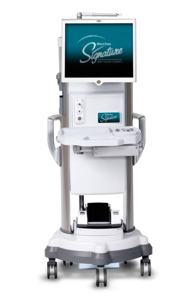Premium Lenses
Clear Lens Exhange
Clear Lens Exchange, or CLE, is a surgical procedure that can reduce or eliminate the need for glasses or contact lenses for patients over 40, and can potentially correct both nearsightedness and farsightedness. Unlike other refractive procedures that change the shape of the cornea, CLE corrects vision by replacing the eye’s natural, crystalline lens with an intraocular lens (IOL).
Who is a good candidate?
 Clear Lens Exchange is a good procedure for people who are very nearsighted (distant objects appear blurry) or farsighted (close objects appear blurry), people with early cataract formation, and individuals who want to treat presbyopia (gradual decline in the ability to focus on close objects) with a multifocal impant. For some patients, CLE can be a great alternative to LASIK.Please click below on the ‘cataracts section’ to recieve further explaination on our premium lenses.
Clear Lens Exchange is a good procedure for people who are very nearsighted (distant objects appear blurry) or farsighted (close objects appear blurry), people with early cataract formation, and individuals who want to treat presbyopia (gradual decline in the ability to focus on close objects) with a multifocal impant. For some patients, CLE can be a great alternative to LASIK.Please click below on the ‘cataracts section’ to recieve further explaination on our premium lenses.
Clear Lens Exchange is for those who:
- Are over 40
- Want to reduce or eliminate their dependence on glasses or contact lenses
- Are both very nearsighted or farsighted with early cataract formation
- Very nearsighted or farsighted
- Want to treat presbyopia with a multifocal implant
- Are looking for an alternative to LASIK
What to Expect on Surgery Day
Clear Lens Exchange is performed on an outpatient basis and only takes about 15 minutes! Upon arrival for your surgery, you will be given a local anesthetic to numb your eye during the procedure. The skin around your eye will be thoroughly cleansed, and sterile coverings will be placed around your eye to keep the surgical area clean during the procedure. You eye will be held open with an eyelid holder so you will not have to worry about keeping your eye Open during the procedure. Under an operating microscope, your doctor will create a small incision on the eye. The natural lens is gently fragmented and removed by the use of ultrasound. Then a plastic intraocular lens (IOL) is implanted to replace the natural lens that was removed. Your doctor will determine which type of IOL is best for you. The incision is then closed and a protective shield is placed on your eye.
IOL’s

Monofocal IOL vs Multifocal IOL:
Until recently most patients undergoing cataract surgery received a monofocal or single focus IOL to replace their natural lens. Monofocal IOLs when implanted in both eyes generally provide excellent distance vision but many patients require glasses to see clearly at both near and intermediate distances.
Multifocal IOLs:
A multifocal lens is a break-through lens for cataract surgery that lets patients see from near to far, usually without glasses. An innovation optical technology called “adopization” makes the Multifocal lens uniquely effective, especially when placed in both eyes. A similar technology has been used for years in microscopes and telescopes to improve image quality and has now been patented for use in intraocular lenses. Multifocal lens patients find that they can read a book, work on the computer, drive a car-day or night, and play golf or tennis with an increased freedom from glasses. Multifocal lenses have helped tens of thousands of people see near, far, and everything in between without depending on glasses in most situations. It is based on over 20 years of advancements in lens optics used in the treatment of cataracts. It is implanted during a brief 15-45 minute outpatient procedure with little or no downtime in most cases.
Toric IOLs :
A person who has both cataract and corneal astigmatism may not regain high quality distance vision after surgery to remove the cataract unless the astigmatism is also corrected. Vision provided by a traditional replacement lens may be blurred or distorted with correcting the astigmatism. With the toric IOL, you may recapture quality distance vision in only one step
What Are the Risks Assoiciated with Clear Lens Exchange?
Any surgical procedure comes with inherent risk. Although very uncommon, risk associated with CLE are similar to that of cataract surgery including bleeding, swelling, infection, retinal detachment, and capsular opacification. During your pre-operative consultation, Dr. May will answer any questions and thoroughly explain these and any other risks associated with Clear Lens Exchange. Call today 717-637-1919.
